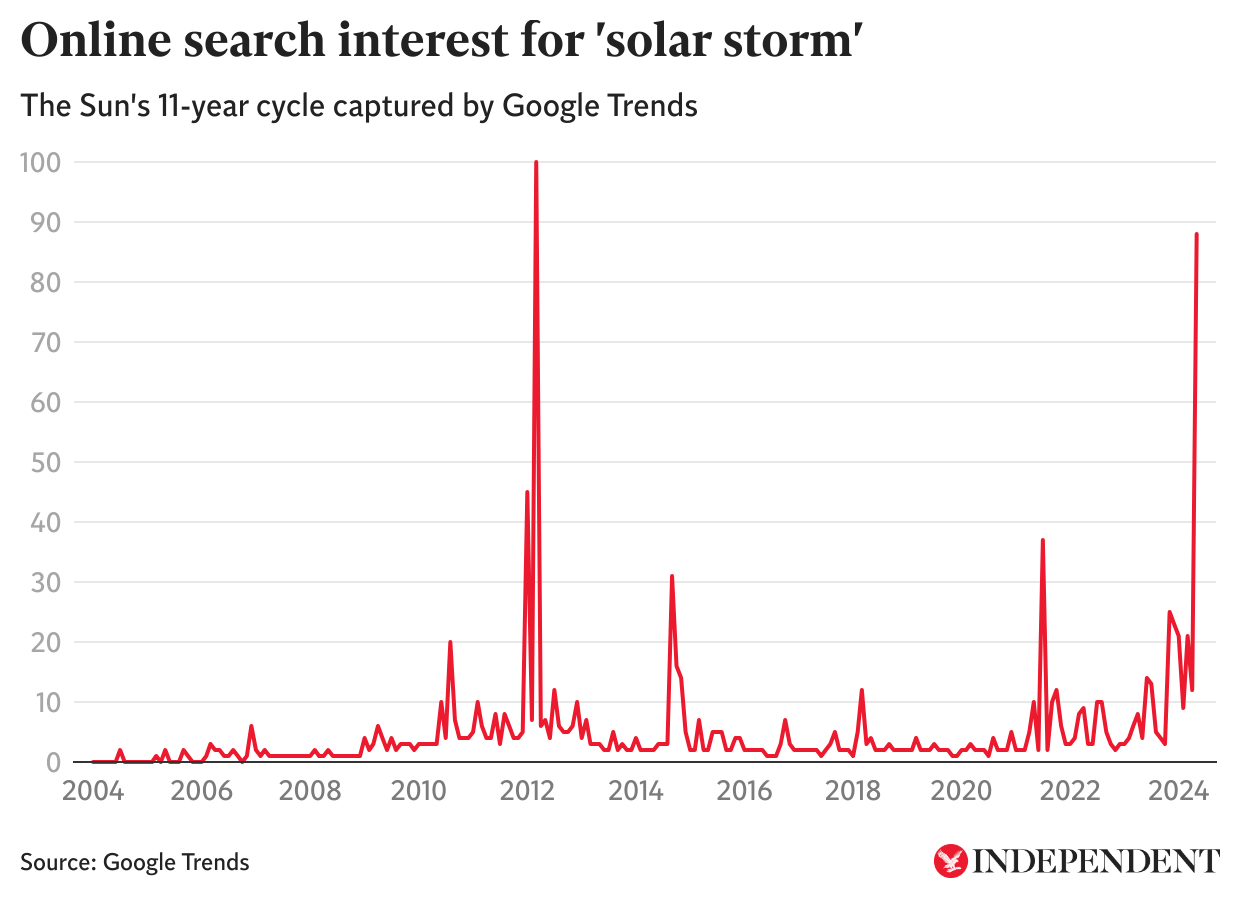Sunspot that caused intense solar storms makes dramatic comeback
Solar storm could bring extreme auroras, as well as ‘complete collapse’ of electrical grids and blackouts, NOAA warns
Your support helps us to tell the story
From reproductive rights to climate change to Big Tech, The Independent is on the ground when the story is developing. Whether it's investigating the financials of Elon Musk's pro-Trump PAC or producing our latest documentary, 'The A Word', which shines a light on the American women fighting for reproductive rights, we know how important it is to parse out the facts from the messaging.
At such a critical moment in US history, we need reporters on the ground. Your donation allows us to keep sending journalists to speak to both sides of the story.
The Independent is trusted by Americans across the entire political spectrum. And unlike many other quality news outlets, we choose not to lock Americans out of our reporting and analysis with paywalls. We believe quality journalism should be available to everyone, paid for by those who can afford it.
Your support makes all the difference.A massive sunspot that caused last month’s intense auroras across large portions of the planet is once again returning to face the Earth.
The AR3723 sunspot, which was formerly known as AR3697 and AR 3664, triggered an extreme G5 geomagnetic storm in May, which is the highest possible level.

The solar storm resulted in sightings of the Northern Lights throughout the UK and in dozens of US states. The celestial spectacle could even be seen in some parts of France for the first time in more than 20 years.
It is not clear whether the returning sunspot will lead to similar auroras, though astronomers have noted that the Sun is currently approaching a point in its 11-year cycle known as the solar maximum, making such occurrences more likely.
The peak of geomagnetic activity occurs when the Sun’s north and south poles flip around, with the last solar maximum taking place in April 2014.

The date of the next solar maximum will not be known until it has already passed, with space weather forecasters currently predicting that it will take place at some point between now and early 2026.
“Solar storms can happen at any time. The biggest solar storms typically happen weeks to years after the solar maximum is reached,” said Rami Qahwaji, a professor of visual computing at the University of Bradford, who set up the Space Weather Prediction Group.
“As the solar cycle progresses, more sunspots appear and could be located closer to the Sun’s equator. The chances of having coronal mass ejections aimed directly at Earth rather than out into space could also increase.”

Should another G5 geomagnetic storm take place again, the arrival of auroras could also coincide with widespread disruption to power systems, satellites and other spacecraft.
The Space Weather Prediction Center at the US National Oceanic and Atmospheric Administration (NOAA) warns that such extreme storms could also lead to communications systems being impacted.
“High frequency radio propagation may be impossible in many areas for one to two days, satellite navigation may be degraded for days, low-frequency radio navigation can be out for hours,” the agency warned, adding that “some grid systems may experience complete collapse or blackouts”.
A solar flare emitted by the returning AR3723 sunspot on 23 June caused brief shortwave radio blackouts across Western Europe and West Africa, according to NOAA.

Join our commenting forum
Join thought-provoking conversations, follow other Independent readers and see their replies
Comments